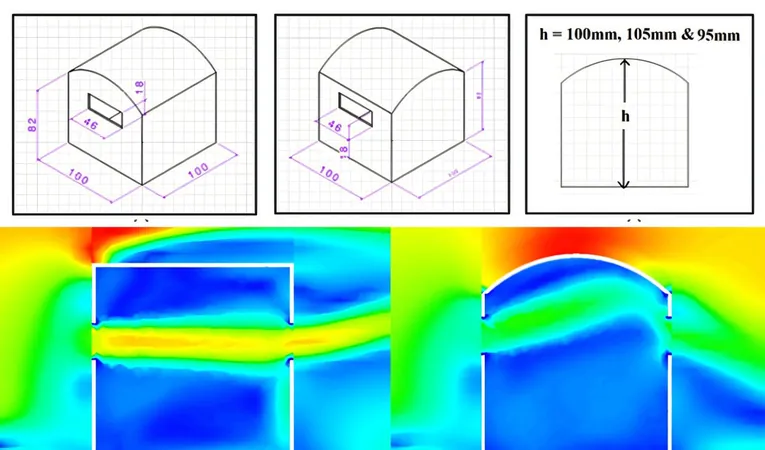
Battling Badminton Birdies: How to Tame Drift for Optimal Play
2024-11-12
Author: Sophie
Introduction
When it comes to high-stakes badminton tournaments, even a seemingly perfect indoor court can become rife with challenges—one of the foremost being the drift of the birdie. This phenomenon can dramatically alter the dynamics of a match, leading to unexpected outcomes and heightened tensions among players.
The Cause of Drift
The often-overlooked culprit? The airflow from the court's heating, ventilation, and air conditioning (HVAC) systems, coupled with natural cross ventilation. These air currents interact with the lightweight feathered birdie as it flies between opponents, causing what players and experts refer to as "wind drift." Unfortunately, this drift has sparked numerous controversies during tournaments, leading to frustrations among players and spectators alike.
Proposed Solutions
Many might think that simply shutting off the ventilation could be a quick fix, but this solution has its pitfalls. Without proper airflow, players can experience discomfort, significantly impacting their performance when it matters most.
Innovative Research
In enlightening recent research published in the journal *Physics of Fluids*, author Karthik Jayanarasimhan proposes a more innovative approach: varying roof configurations designed to reduce birdie drift. Specifically, he suggests that badminton matches—especially critical ones—be staged in venues featuring a barrel-shaped roof combined with strategic ventilation openings for optimal airflow management.
Key Findings
"The insights gained from this research should be considered when planning the construction of new badminton stadiums," Jayanarasimhan advises. "Designing roofs and openings based on our findings can enhance not only player comfort but also the overall game experience." To illustrate their point, the research team conducted simulations examining airflow patterns in stadiums with barrel roofs compared to flat roofs. The results revealed that certain shapes significantly minimize wind drift, thereby providing a more controlled environment during play.
Conclusion
While it's impractical to retrofit every badminton stadium to adopt these recommendations, the study underscores the significance of identifying specific areas within existing courts where wind drift is minimal. "For current barrel roof facilities, modifying the ventilation openings could be a feasible solution. Revamping entire roofs, however, would be a considerable expense," Jayanarasimhan cautions. This breakthrough research not only offers practical design suggestions for future badminton arenas but also challenges the sports community to think beyond traditional methods of addressing drift. It's time to rethink how we design badminton courts for peak performance—disrupting the status quo could lead to a new era where birdies fly true and matches unfold without the looming threat of atmospheric interference. In an age where every point can determine a champion, understanding the physics of play could be the key to unlocking greatness on the court!









 Brasil (PT)
Brasil (PT)
 Canada (EN)
Canada (EN)
 Chile (ES)
Chile (ES)
 Česko (CS)
Česko (CS)
 대한민국 (KO)
대한민국 (KO)
 España (ES)
España (ES)
 France (FR)
France (FR)
 Hong Kong (EN)
Hong Kong (EN)
 Italia (IT)
Italia (IT)
 日本 (JA)
日本 (JA)
 Magyarország (HU)
Magyarország (HU)
 Norge (NO)
Norge (NO)
 Polska (PL)
Polska (PL)
 Schweiz (DE)
Schweiz (DE)
 Singapore (EN)
Singapore (EN)
 Sverige (SV)
Sverige (SV)
 Suomi (FI)
Suomi (FI)
 Türkiye (TR)
Türkiye (TR)
 الإمارات العربية المتحدة (AR)
الإمارات العربية المتحدة (AR)